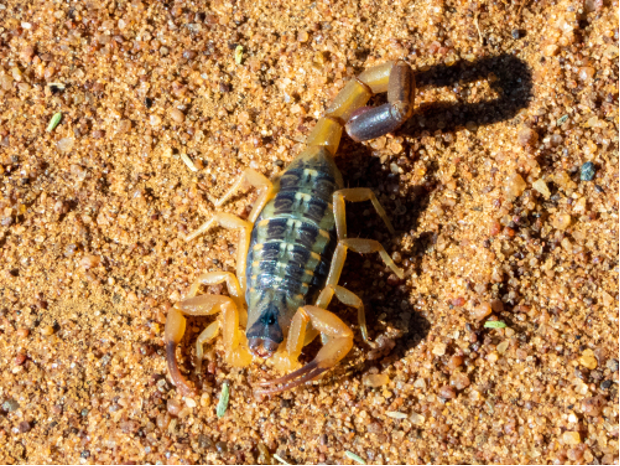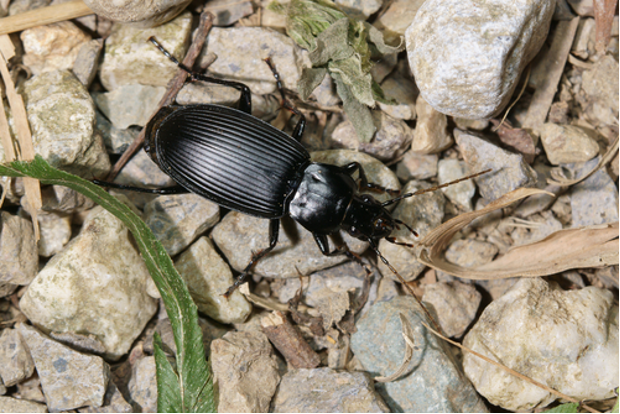You may think that scorpions are rare creatures only found sneaking through the most desolate parts of the desert. However, that’s not the case. In fact, there are many species of scorpions found in the western and southern U.S.—they can even be found as far north as southernmost Illinois!
Don’t let this news make you nervous! Scorpions aren’t evil little creatures just waiting for the right moment to attack (humans, anyway). To give yourself peace of mind, it’s important to learn more about scorpions. That’s why the experts at Plunkett’s have put together a guide on what you need to know about scorpions.
How to Identify Scorpions
Scorpions are easy to recognize. Much like spiders, the head and thorax are fused together. The last five segments of the abdomen form a “tail” with a bulb-shaped stinger at the tip. Scorpions have 8 walking legs and 2 enlarged pedipalps with pincers in the front for grabbing prey:
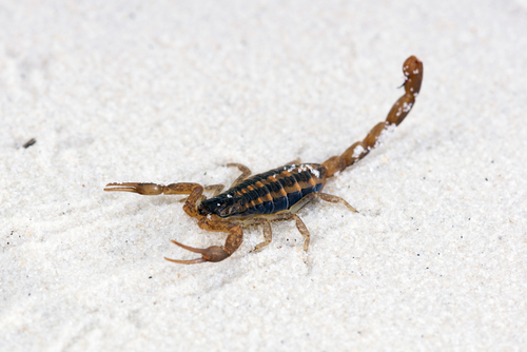
Common Striped (or Striped Bark) Scorpion (Centruroides vittatus)
Adult scorpions vary in size and can be anywhere from 2 to 4 inches in length, depending on the exact species type. All scorpions are brown in color and some species have stripes or patterns.
Where Can Scorpions Be Found?
Scorpions are most common in the southwest desert. However, they can be found in all states in blue in the image below:
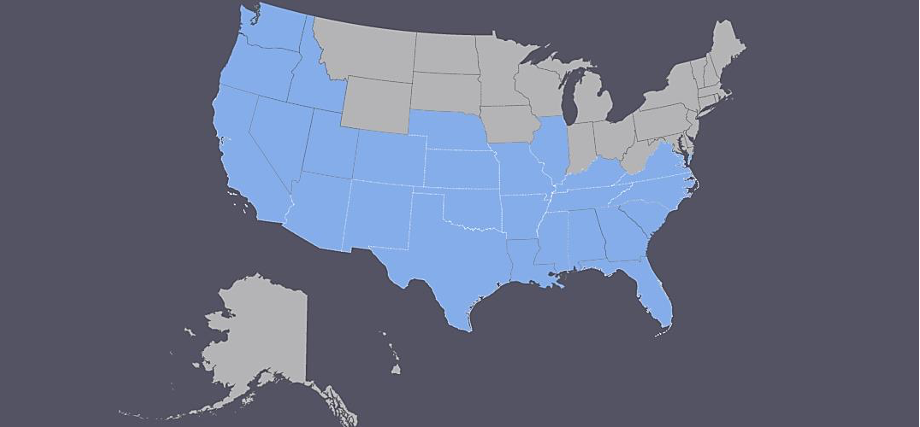
Image Credit: amcharts.com Image Credit: amcharts.com
Keep in mind, however, that scorpions do not reside throughout the entirety of each state in blue. For example, scorpions can only be found in the extreme southwestern region of Illinois.
What Do Scorpions Eat?
Scorpions can actually live for months without eating if water is readily available to them. However, when they do eat, they spend the night hunting for insects, spiders, other scorpions, and even small vertebrates (such as rodents or snakes). Scorpions have poor eyesight and find their prey by touching it and then use their sting to paralyze or kill prey before eating it.
How Do Scorpions Breed?
Scorpions are nocturnal, so they mate at night while they are out foraging for food; mating takes place in the spring and fall.
Female scorpions do not lay eggs—they give birth to live young about 8 months after mating. The young look like miniature adult scorpions and need about 4 years to mature (adult scorpions live for about 2 years). There can be anywhere from 20 to 45 scorpions in a litter. The female will carry her young on her back until they have molted for the first time.
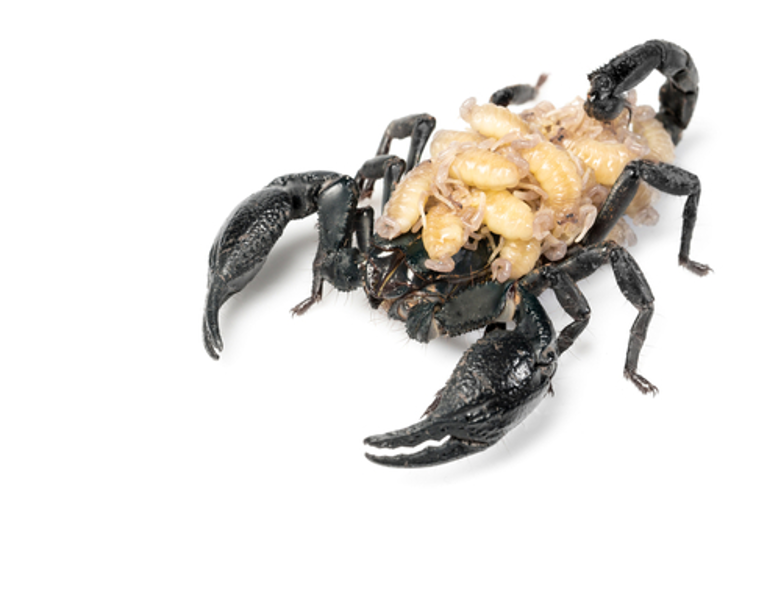
Female Scorpion Carrying Her Young on Her Back
Where Do Scorpions Hide?
During the day, scorpions hide in dark, protected places. Some species dig burrows in the ground, others use crevices and voids as harborage. Scorpions are drawn to moisture such as sprinklers, outdoor pools, sinks, and indoor tubs. They often hide under objects that retain moisture like damp towels, mats, pavers, and tarps. Common scorpion hiding places include:
● In piles of wood or debris
● Under bark
● Beneath stones or logs
● Under virtually any item left lying on the ground
In especially arid regions (like the southwest desert) scorpions can shelter in attics and crawl spaces. However, they don’t infest or nest in structures—scorpions are predators at night and love to climb. They will often climb the stucco walls and find a crack near the soffit to gain access.
Once they’re inside, they search for prey and gravitate to light If they don’t find prey, they generally move out of the attic. It is also common for folks to find dead scorpions in light fixtures.
Are Scorpion Stings Dangerous to People?
People often think of scorpions as dangerous and deadly creatures. However, only one species in North America has a lethal sting: the Arizona bark scorpion. The Arizona bark scorpion is only found in New Mexico, Arizona, and California’s border along the Colorado River.
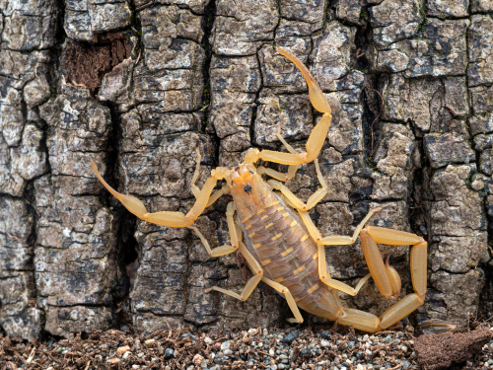
Arizona Bark Scorpion (Centruroides sculpturatus)
The sting of other species of scorpions causes sharp pain, swelling, and some discoloration at the wound site, but is no more dangerous than a wasp sting. Discomfort from a scorpion sting usually subsides within 30 minutes.
The common striped scorpion (sometimes called the striped bark scorpion) has a sting that can be extremely painful (although, not lethal). The scorpion is 2 ½ inches long and bears two dark stripes down the back to the base of the tail. The common striped scorpion can be found in Illinois, Kansas, Missouri, Nebraska, and Oklahoma.
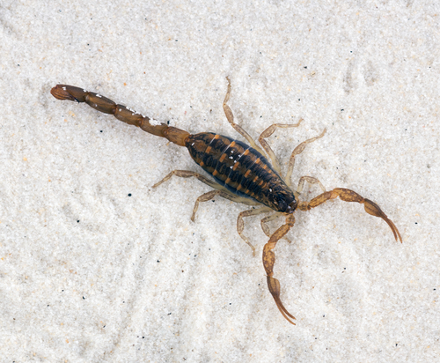
Common Striped Scorpion
What to Do for a Scorpion Sting:
In the event of a scorpion sting, try to capture the scorpion for identification using a jar or large container. Keep the sting victim calm and ice the area to relieve pain. Allergic reactions are rare but can happen. If the person strung experiences symptoms like shortness of breath or chest pain, seek medical attention immediately.
How to Avoid Scorpion Stings:
To avoid scorpion stings:
- Be cautious when picking up objects on the ground outdoors (especially if moisture may be trapped beneath it)
- Examine and shake out anything left on the floor overnight
- Carefully check shoes, boots, hats, and gloves before wearing
- Wear gloves and shoes when working in the yard or outdoors
- Don’t reach inside an area if you cannot see into it
How to Inspect for Scorpions:
Before you begin scorpion inspection, make sure you’re wearing long sleeves, long pants, heavy-duty gloves, and boots to protect against stings.
Checking for Scorpions Outside:
Inspect areas where scorpions hide and hunt: on structures, building crevices, walls, and foundations. Pay attention to yard waste, trash piles, landscape stones and timbers, compost, mulch, and stacks of firewood or lumber. Carefully pull back any loose bark on standing or fallen trees and look under any items lying on the ground and near areas of moisture.
How to Check for Scorpions Inside:
Check protected locations such as crawl spaces and attics and any items left on the floor. Remember to inspect barns, sheds, and other outbuildings as well.
Inspecting the Severity of a Scorpion Problem:
One technique for assessing the extent of a scorpion problem is to heavily water an area of ground near a building foundation. Then, cover the area with plywood, cardboard, burlap, or tarp (if using a tarp, place a heavy object on top of it to weigh it down). You will find scorpions hiding beneath the covering. Carefully check this area every few days to know whether scorpions are present in the area.
It may be easier to inspect for scorpions at night. Because they come out of hiding at night, they can often be seen wandering on the ground or over rocks, logs, debris, and building foundations. Plus, scorpions glow bright blue-green under UV light, which makes them visible even from a short distance away:
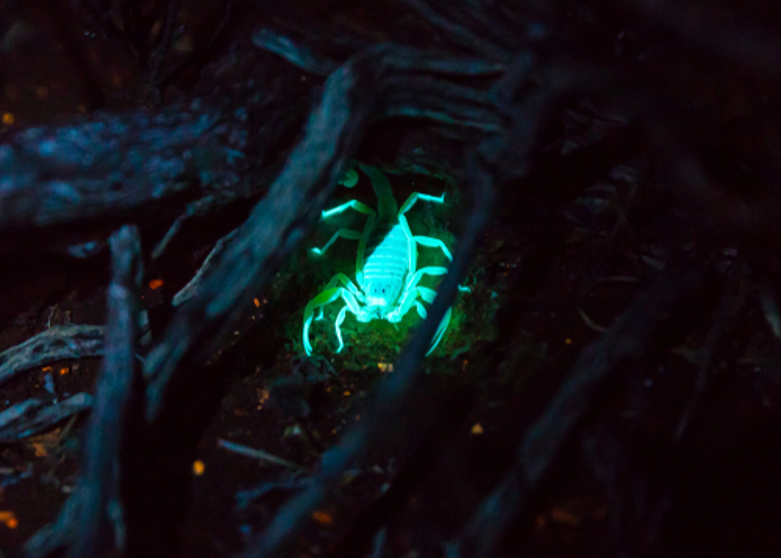
To See a Scorpion at Night, Use a Portable Black Light
Scorpion Control, Treatment, and Prevention
To prevent scorpions near your property, remove trash piles, yard waste, compost piles, excess mulch, and landscape timbers and stones. It is also helpful to store firewood off the ground. Keep plants and trees trimmed away from your structure, as well.
However, if you follow the measures above and you still end up with scorpions in or near your home or business, get in touch with a professional pest control company. We understand that it can be unnerving to deal with scorpions. The experts at Plunkett’s Pest Control can get rid of scorpions quickly and safely—our scorpion treatment plans also prevent future scorpion problems!
Don’t Let the Scorpions Sting, Give Plunkett’s a Ring!
Whether you’re looking for scorpion removal in your home or scorpion prevention at your business, the pest control technicians at Plunkett’s have you covered. Schedule a service online or give us a call at 866-359-0832 to get started!

